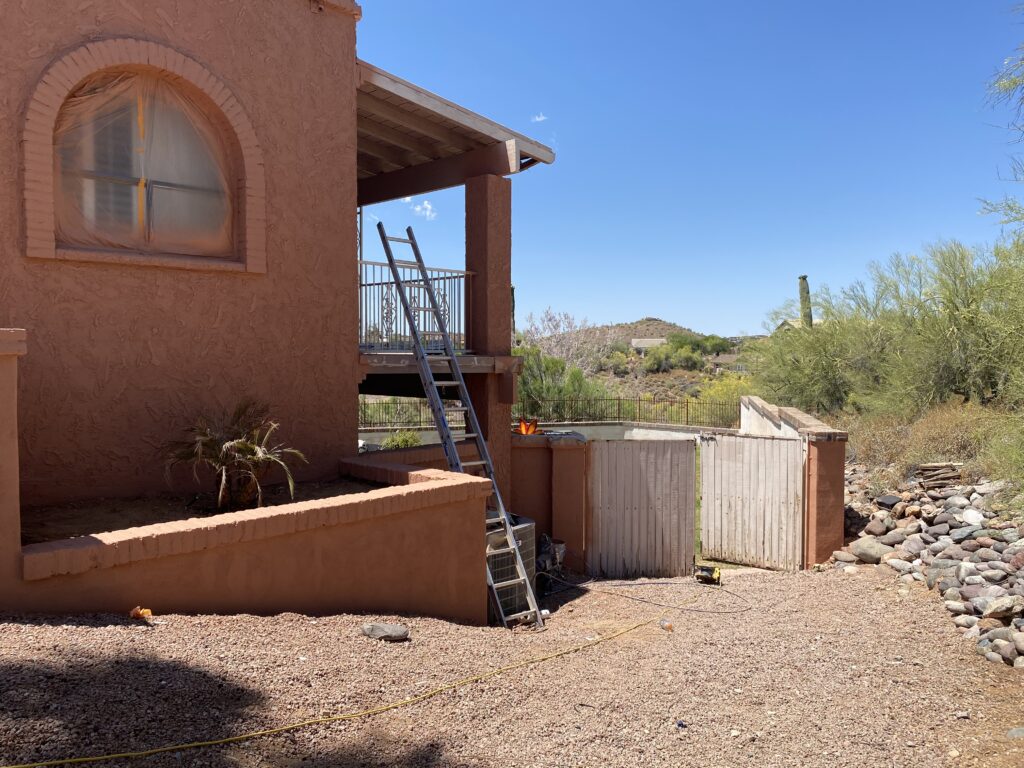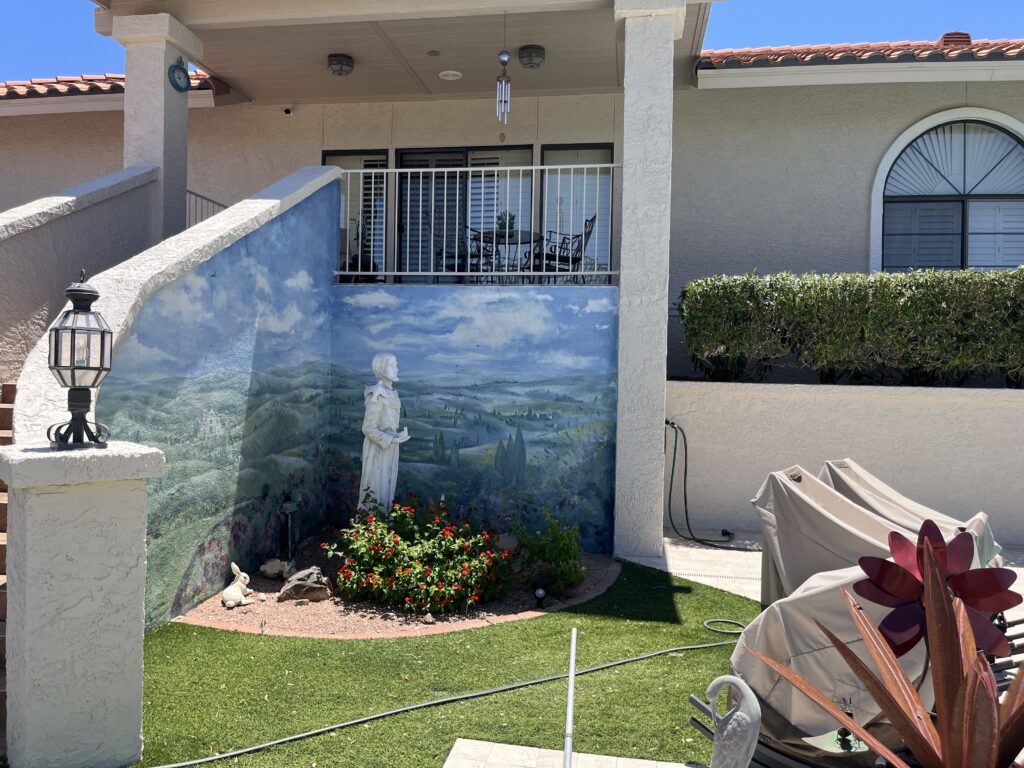How Sunlight & Weather Affect Exterior Paint Color in Peoria AZ
How Sunlight & Weather Affect Exterior Paint Color in Peoria AZ Sunlight and weather play a powerful role in how exterior paint looks and lasts. Ultraviolet rays break down pigments, high temperatures accelerate fading, and weather extremes can lead to peeling, chalking, and cracking. Even the direction your house faces and the type of surface you paint affect how color appears and endures. Whether you’re planning a full repaint or choosing a new exterior palette, understanding how these elements interact will help you make long-lasting, beautiful decisions. At Happy Painting Company, we’ve spent over 20 years helping Arizona homeowners make smart, long-lasting paint choices that hold up under some of the harshest sun and heat in the country. Why Light Exposure Matters More Than You Think When choosing an exterior paint color, most people focus on swatches or digital mockups. But what looks great in a brochure might look completely different once it’s up on your home. That’s because sunlight — both direct and reflected — can dramatically shift how a color appears. A soft beige might feel warm and cozy in morning light, yet appear yellow in the harsh afternoon sun. Grays that feel cool and modern in shade may suddenly look bluish or washed out in full sunlight. These changes are often subtle at first, but over time, exposure to UV rays can dramatically alter the visual impact of your home’s exterior. How Natural Light Changes Exterior Color Perception Natural light is dynamic. It shifts based on time of day, season, cloud cover, and even your landscaping. Morning light tends to be softer and warmer, while afternoon sunlight is more intense and cooler in tone. Homes in sunnier climates — like Phoenix, Peoria, and Scottsdale — are constantly bathed in bright, direct sunlight. That light can amplify undertones in your paint that you might not notice indoors or in a showroom. That’s why testing paint samples directly on your home’s exterior walls, in both shaded and sunny areas, is so important. Watch how the color changes from dawn to dusk, then make your final decision. The Role of Your Home’s Direction & Surroundings The direction your house faces has a big impact on how color appears and ages: South-facing homes receive the most intense sunlight throughout the day. Colors here will look brighter — and fade faster. North-facing homes stay relatively shaded, often making colors appear darker or cooler. East-facing walls get softer morning sun, while west-facing walls experience the strongest afternoon light. Surrounding elements like nearby trees, grass, or neighboring homes can also cast reflected hues onto your home, slightly shifting your chosen paint color in unexpected ways. Weather’s Impact on Paint Longevity While sunlight is the biggest factor in Arizona, weather as a whole plays a huge role in how long your exterior paint lasts. Paint is designed to protect your home from the elements — but over time, those same elements begin to wear it down. Rain, dust storms, wind, and humidity can all affect paint’s adhesion and durability. Moisture can seep into unsealed areas, leading to peeling and blistering. Rapid temperature changes can cause expansion and contraction in the siding underneath, putting stress on the paint film. What Happens to Exterior Paint in Sun, Rain & Humidity? Paint exposed to prolonged sun and heat tends to: Fade due to UV breakdown Chalk — a dusty residue forms as the paint’s surface breaks down Peel or crack when temperatures fluctuate or moisture gets underneath Bubble or blister if painted in high humidity or direct heat Even if you’ve chosen a premium exterior paint, the environment around your home plays a significant role in how it performs over time. Common Paint Damage: Fading, Chalking, Peeling & More Let’s break down the most common types of paint deterioration caused by sun and weather: Fading & Bleaching: UV rays break down pigments, especially in darker colors, leaving walls looking dull or uneven. Chalking: A powdery residue appears on the surface as binders deteriorate. Peeling: Occurs when paint loses adhesion, often due to moisture infiltration or poor prep. Blistering & Bubbling: Air or water trapped beneath the surface causes bubbles to form. Cracking: Temperature extremes or aging paint can lead to visible cracks that allow water to penetrate. What Colors Fade the Fastest in Sunlight? In general, the darker and bolder the color, the more noticeable fading will be over time. Think deep blues, reds, and forest greens — they look stunning at first but tend to fade more quickly than lighter neutrals or earth tones. Light reflectance value (LRV) is a helpful guide when choosing a paint color. The lower the LRV, the more light (and heat) a color absorbs. High-LRV colors reflect more light and stay truer longer, especially in sunny climates like Arizona. Surface Type & Paint Reaction: Wood, Stucco, Brick & More Different exterior surfaces respond to weather and sunlight in different ways. For example: Stucco: Common in the Southwest, stucco expands and contracts with heat. Use elastomeric or breathable coatings to avoid cracking. Wood: Prone to warping and rot if not sealed correctly. UV rays can also break down wood fibers under thin or aging paint. Brick: Absorbs heat but can handle temperature changes well if sealed with proper masonry paint. Knowing your surface type helps determine which paint product and prep method is best for long-term durability. Choosing & Evaluating Exterior Colors the Right Way Before you commit to a full exterior repaint, test out a few contenders: Paint large sample areas on different sides of your home. Observe at different times of day for at least a week. Avoid relying solely on tiny swatches or digital previews. Walk your neighborhood and take note of homes with similar lighting conditions. Evaluating colors in real life, under real sunlight, is one of the smartest moves you can make. Optimal Conditions for Exterior Painting: Temperature & Humidity For a flawless finish that lasts, timing your paint job matters just as much as the color.



